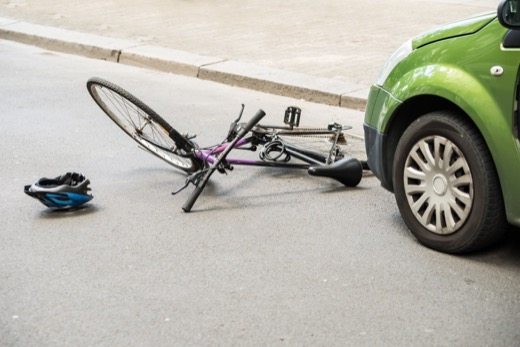Know Your Rights as a Florida Bicyclist Injured in an Accident
According to statistics gathered by Helmets.org, 818 bicyclists died on U.S. roads in 2015, an increase of 12.2 per cent and the highest number since 1995. The data for 2014 gives a more complete picture of the incidence of bike-related accidents:
Bicyclists killed in 2014: 726
Total injured: 6,000
Average age of a bicyclist killed on U.S. roads: 45
Males killed: 87 percent
Males injured: 83 percent
24 percent of the cyclists killed had been drinking
71 percent of fatal crashes were urban
About half of the fatalities occurred during daylight hours
These statistic indicate that bike accident fatalities and injuries are on the rise. As more bicyclists are favoring two wheels over four for reasons of convenience or conservation, the design and construction of our streets and roadways lag behind in safety features to protect bicyclists from automobile and truck drivers.
Bike Drivers Treated Same as Car Drivers
Florida bicycle law is pretty comprehensive and includes provisions regulating the conduct of cyclists. The law treats a bicycle driver the same as any other vehicle driver and makes clear that a bicycle driver in Florida has many responsibilities to uphold. Bicyclists have the same rights to the roadways, and like other drivers must obey the same traffic laws, such as stopping for stop signs and red lights, riding with the flow of traffic, yielding the right-of-way when entering a roadway and yielding to pedestrians in crosswalks.
In addition, bicyclists must adhere to laws requiring they wear a helmet while driving a bike and use lights when driving at night among several other legal mandates.
Wearing of Helmets
A bicycle rider or passenger under 16 years of age must wear a bicycle helmet that:
Is properly fitted
Is fastened securely
Meets federal safety standard for bicycle helmets
Use of Lights at Night
A bicycle operated between sunset and sunrise must be equipped with:
A white light lamp on the front whose beam is visible from 500 feet to the front
A red reflector and a lamp on the rear exhibiting a red light visible from 600 feet to the rear
The lamps are permitted to flash though. Additional lighting is permitted.
Acceptable Number of Drivers on a Bike at One Time
A bicycle may not be used to carry more than one person at one time unless it is designed or equipped for more than one rider.
Carrying a Child on a Bike
An adult bicyclist may carry a child in a sling, child seat or trailer designed to carry children.
Driving a Bike on Sidewalks
A bicyclist riding on a sidewalk or crosswalk has the rights and duties of a pedestrian
and may ride in either direction. At an intersection with a traffic signal, a cyclist on a
sidewalk must obey the instructions of any pedestrian control signal. Also, a bicyclist driving on the sidewalk must:
Yield the right-of-way to pedestrians and must give audible warning before passing
Not propel a bike by any power other than human power
Headsets, Earphones
A cyclist may not wear a headset, headphone, or listening device, other than a hearing aid, while driving a bike.
Driving Under the Influence
It is unlawful to drive a bicycle while under the influence of alcohol or drugs. Bicyclists, do not, however, have to submit to a breath test. Consent to such a test is given only by a person with a driver license who is operating a motor vehicle.
Protect Your Rights After an Accident
Because operating a bicycle is considered the same as driving a motor vehicle, accidents involving bicyclists and cars or trucks or other cyclists are treated the same as other accidents involving cars or trucks. Florida law states that every driver of a vehicle shall exercise due care to avoid colliding with a pedestrian or a bicyclist. Vehicle drivers are expected to drive in a careful manner and pay attention to the width of the road and its corners, the traffic volume, and other factors to avoid injury to persons or property.
Report the Accident
Report the crash, even if you don’t have obvious injuries or believe you are not seriously hurt. Your bike may have been damaged and the extent of the damage may not be known until you’ve taken it to a repair shop. Report the accident whether it involves a car, truck, animal, another bike, or a pothole. In accidents with a motor vehicle where there are injuries or property damage that exceeds $500, Florida law requires that you report the crash.
If the investigating police officer doesn’t take information from the other party, make sure you get the person’s name, address, telephone number, and insurance company. If the accident involved a dog, learn who owns the dog and get the owner’s homeowners’ insurance information.
The Accident Report
After a bike accident, your crash report will include important details, such as road conditions, weather, any eyewitnesses, and maybe a drawing of the accident site. All this information will be critical to any case you may bring against another driver or an insurance company. Give the report to your attorney.
Take Pictures of Your Injuries
Take photo of your bruises, sores, road rash and scabs. Try writing down how your injuries limit your activities, and the aches and pains you experience.
Photograph the Scene of the Accident
Take photographs or videotape of the site of the accident. Note road and weather conditions. The conditions of the road when you had your crash may change over time as roads are resurfaced. If there are marks or debris left by the accident, photograph them.
If you or a loved one has been injured in a collision or other accident with a car, truck, dog, street obstruction or impairment, or another bicyclist, call us today for a free consultation with the determined personal injury attorneys in Ft. Lauderdale at Madalon Law. The attorneys at Madalon Law are experienced in bike accident law and will fight for your rights. We are based in Fort Lauderdale and serve clients throughout Florida. Let Madalon Law fight for you.






